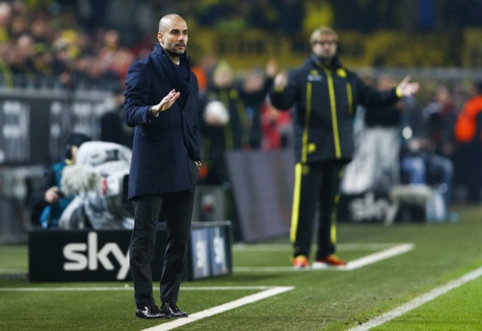
Throughout football history, the understanding of the game and the tactics chosen by coaches have constantly changed, and not one tactical innovation has permanently changed football for all time. Football Daily decided to present five revolutionary tactics that changed football forever.
"False Ninth"
Although most associate the use of the "false nine" tactic with Pep Guardiola's coached Barcelona, this tactical trick actually originated a long time ago. In the 1930s, Austrian national team forward Matthias Sindelar would drop deep into his own half, forcing defenders into unusual positions. This strategy gave the Austrian the opportunity to bypass slower defenders and create chances for himself and his teammates.
Later, this tactic was slightly modified and revived by Luciano Spaletti's coached Roma team. By leveraging Francesco Totti's creative abilities, he placed his leader in this role, leading to successful results - the team went unbeaten in 24 consecutive matches.
However, this tactic became widely known in 2009 when Pep Guardiola, then coaching Barcelona, decided to push 21-year-old Lionel Messi into this position against their fierce rivals Real Madrid. Constantly changing his position, Messi confused the opponents' defense, leading to a stunning 6-2 victory.
Recently, coaches are not afraid to use this tactic, as seen in the European Championship when Mario Gotze or Thomas Muller occupied the "false nine" position for the German national team due to the lack of a high-level striker.
"Catenaccio"
"Catenaccio" is an Italian word meaning "door bolt," which was the name given to a defensive system used in the 1950s-1960s. It involved four defenders marking opponents individually, with one defender staying closer to their own goal to prevent counterattacks and providing additional defense against a ball-carrying attacker.
Helenio Herrera was the most prominent coach to use this tactic. His Inter team dominated both domestically and in Europe, winning three Serie A titles and two European Cups. Herrera's tactics were often called anti-football, but he believed that was a label only for those using the "Catenaccio" tactic.
"Total Football"
The essence of "Total Football" was to create a style where technically skilled and game-savvy players could shine. Players frequently changed positions, making their game highly dangerous and unpredictable.
The Hungarian national team and the Burnley team first experimented with this tactic in the 1950s, which was later perfected by the Ajax team and the Dutch national team under coach Rinus Michels and then the team's captain Johan Cruyff. Constant movement and positional changes made it difficult for opponents using man-marking defense, leading Ajax to three consecutive European Cup victories.
"Tiki-Taka"
Within a few years, talking about "Tiki-Taka" went from describing a beautiful and amazing style of play to criticizing it as boring and unattractive. This tactic is based on quick, short passes, with players constantly moving to find spaces and create passing triangles. Spain's national team, under Luis Aragones and Vicente del Bosque, used this tactic to win two European Championships and a World Cup.
"Pressing"
Unlike the other items on this list, "Pressing" is not a football tactic. It can be used with various tactics and involves pressing opponents and closing passing lanes to quickly regain possession. Various forms of pressing exist, with some teams pressing only in their own half, while others press up to the opponent's goalkeeper.
Jurgen Klopp's "Gegenpressing" method aims to force opponents to make mistakes close to their own goal, turning errors into dangerous attacks. With this pressing style, his Borussia team won two Bundesliga titles and reached the Champions League final in 2013.
As players continue to improve their physical condition, we can expect the development of new and more sophisticated pressing tactics in the future, which will continue to change football.























